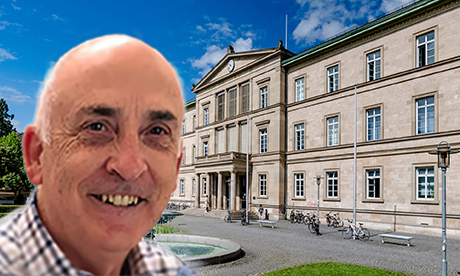Recently, United States cultural celebrities addressed an open letter to Pope Francis, opposing further restrictions on the pre-conciliar liturgy.
The letter, written by poet Dana Gioia, emphasised the aesthetic value and cultural significance of the liturgy according to the 1962 rite: “It would be short-sighted to deprive the next generation of artists of this source of mystery, beauty, and devotion,” the letter stated.
The signatories write: ‘We all, whether believers or not, agree that this ancient liturgy, which inspired the works of Palestrina, Bach, and Beethoven, as well as generations of great artists, is a great achievement of civilisation and part of humanity’s shared cultural heritage.
“It is medicine for the soul, an antidote to the crass materialism of postmodernity.”
The Catholic signatories explicitly emphasised their loyalty to the Pope and the validity of the current Novus Ordo: “We hope that you do not lump us together with some of the angry and disrespectful voices amplified by social media.”
Archbishop Salvatore Cordileone of San Francisco praised the letter as an ‘extraordinary statement by some great artists and cultural figures on the value and inspiration they have drawn from the traditional Latin Mass.’
A group of British celebrities published an open letter in the London Times:
“We implore the Holy See to reconsider any further restrictions on access to this great spiritual and cultural heritage.”
This letter referred back to a similar one from a group of British writers and artists sent to Pope Paul in 1971.
That letter resulted in the “Agatha Christie Indult,” which allowed the bishops of England and Wales to celebrate the pre-conciliar liturgy on special occasions.
Both letters react to speculation of further restrictions on using the pre-conciliar rites, to which recent Vatican decisions have contributed.
The Vatican’s refusal to permit the recitation of the 1962 Mass in Australia’s Melbourne Cathedral, based on the cathedral’s role as a “parish church,” is an example of the implementation of Traditionis custodes (2021).
Another example is its refusal to allow the ordination of members of the traditionalist Society of Missionaries of Divine Mercy in the scandal-plagued French Diocese of Fréjus-Toulon.
While some media, including the French daily “La Croix,” cite curial officials denying that further restrictions are immanent, speculation continues.
Speculation intensified after Pope Francis received Gilles Wach, Prior of the “Institute of Christ the King,” in an audience.
The institute celebrates the liturgy in the pre-conciliar form.
Initially, nothing was known about the content of the conversation until the institute announced that the pope had encouraged them to adhere to their charism.
The most recent example of the problem of “Latin-Mass” groups comes from Christchurch, New Zealand, where Bishop Michael Gielen has expelled a fringe group who lead illicit and abusive exorcisms without training and episcopal permission.
Traditionis Custodes
Traditionis custodes (Guardian of Tradition, 2021) restricted the celebration of the 1962 Missal and other pre-conciliar rites.
It rejected Benedict XVI’s distinction of “ordinary” and “extraordinary” forms of the Mass in his motu proprio Summorum pontificium (2007).
It returned permission for the limited use of the pre-conciliar rites from the individual priest to the diocesan bishop.
Theoretically, this might have worked if it hadn’t been for the divergent way bishops applied this permission.
In February 2023, Francis removed the diocesan bishops’ authority to grant dispensations for the 1962 Missal by transferring this to his liturgical office.
He stipulated that bishops may not dispense from the prohibition of celebrating the pre-conciliar liturgy in parish churches and must seek the explicit permission of the Holy See.
Based on the cathedral’s role as the “parish church of the diocese,” Melbourne Archbishop Comemsoli’s request to use the cathedral was denied.
The refusal to ordain the seminarians of the Society of Missionaries of Divine Mercy in Fréjus-Toulon is based on specific requirements.
All seminarians who wish to use the 1962 Missal after their ordination must show obedience to the Church’s magisterium and seek the permission of their diocesan bishop, who must, in turn, obtain consent from the Vatican.
Part of the problem is the papacy’s indecision on the matter since the 1970’s.
While traditionalist groups such as the Institute of Christ the King continue to celebrate the pre-conciliar Mass based on their statutes, seminarians of the traditionalist Missionaries of Divine Mercy are refused permission for ordination due to their adherence to pre-conciliar liturgy, and exceptions seem random.
The confusion will continue, and the true nature of liturgical prayer will remain prey to secondary influences.
Liturgy is based on baptismal fidelity
Pope Benedict XVI wrote that the Constitution on the Sacred Liturgy, Sacrosanctum Concilium (1963), came first because the liturgy is the heart and center of the Church’s life.
We are not a social club but a community of baptised people who worship God and seek to live the Gospel of Christ daily.
Baptism brings responsibilities and an acceptance of what constitutes the Church’s teaching authority.
We accept that the teaching authority of the Pope and bishops in council, to which the Second Vatican Council belongs, is a category of magisterium.
As baptised members of the ecclesial community, we listen to the Spirit guide the Church through the Church’s magisterium.
To deny this is to turn one’s back on the Catholic Church and to call into question the reality of one’s baptism.
It becomes inauthentic to say that the teaching authority is wrong simply because it does not suit a personal point of view.
Baptism is the basis of how we pray, and how we pray shows what we believe.
Together, these create the “law of prayer” and “law of belief.”
These are not cultural or aesthetic categories but theological ones. Liturgical prayer expresses an ecclesiology.
The breakdown in baptismal authenticity that unites magisterium and liturgical prayer as the basis of faithfulness to the Church has created a situation where ecclesiology becomes a matter of personal choice, and liturgical rites become the battleground of these choices.
One of the main reasons for the liturgical changes during and following the Second Vatican Council has been how the Church understands salvation (who can be saved, the Church’s mission, and the sacramental role in the mysterion of salvation history).
Simply put, the pre-conciliar rites do not reflect this change and are at odds with the church’s self-understanding.
When, in the 1950s rite of Good Friday, the Church prayed for the “perfidious Jews,” and no one blinked an eye at the deep antisemitism, now we pray for the “Jewish People, the first to hear the word of God.”
We pray differently now because the Church’s self-understanding, expressed in the constitutions and documents of the Second Vatican Council, is different from those that went before.
Liturgical rites have meaning, and liturgical rituals express the inner meaning of belief, which is why the liturgy is called a “lex orandi,” a law of prayer.
This “law of prayer” cannot be separated from the “law of belief,” nor can they be played off against each other.
Since the Council, most so-called “Latin Mass” groups have become deniers of the magisterium of the bishops and Pope in council.
A recent example of this is the ordinations of priests in the traditionalist Society of Saint Pius X (SSPX) in the Bavarian diocese of Regensburg.
The diocesan Bishop, Rudolf Voderholze, emphasised that the SSPX’s ordinations were unauthorised and violated ecclesiastical norms. He also expressed hope for the SSPX’s genuine efforts to return to full communion with the Catholic Church, respecting canonical regulations.
The prominent British and United States figures from politics, business, art, and media display an essential misunderstanding of liturgy as aesthetic.
They make a fundamental mistake: they do not understand the initiative sacramental function of the liturgical rites that underpin what the Church believes about itself and how it expresses this belief in a particular place and culture.
As a result, they do not express the deeper meaning of ecclesiology of the rites beyond the aesthetic of specific rituals.
Ultimately, it is nice that the liturgy inspires artists and musicians, but this is not the point or even essential; it is tangential.
Liturgical prayer is not primarily defined by its aesthetic but by its participation in the mysterion of salvation.
The rites use ritual gestures, postures, etc., to express the mysterion.
The problem with an aesthetic approach is that either the ritual expressions become overdone (rituals for the effete, or available to the “gnostic” few) or underdone (becoming too anthropocentric and robbed of mysterion).
The danger in both is either an appeal to a “universal” or idealised culture with its call to uniformity or an appeal to a “particular” or anthropocentric culture and its appeal to local culture.
In both instances, the unity of the Church is not considered because the ecclesiological basis of liturgy is lacking.
The struggle behind the liturgical fights
Liturgical divisions weaken the unity of the Church and are not to be ignored. However, the more fundamental issues are not essentially liturgical but soteriological.
With the introduction of culture as a category of theology throughout the 20th century (and since Vatican II), our understanding of redemption, humanness, salvation, gender, sexuality, and procreation has radically changed.
The liturgy is not at war with itself because it articulates our theology of redemption, which reflects the deeper changed experience since the mid-eighteenth century.
The crux of the liturgical debates is the viability of the Latin Rite Catholic Church to maintain a single liturgical expression when it cannot retain a single pre-modern understanding of salvation because culture has been given a place within the Church in the salvific dialogue between God and humankind.
As the forces of globalisation and inculturation make deeper inroads into the magisterial system’s presumptions, we struggle to maintain a unified view of what it means to be Christian and Catholic in the modern world.
Therefore, it is no surprise that we have a disunified episcopacy, the rejection of papal authority, and liturgical divisions.
The divisions concerning the use of the 1962 Missal are significant theological ones.
That is because within this conflict lie our theological understandings of the Church, laity, ordination, ministry, salvation, women’s rights, participation in worship, and the discipline of believing in the teaching authority of the Church.
Those who choose one over the other should be respected for their choice.
Those who try to celebrate in both rites create a schizophrenic relationship with the Church.
- First published in La Croix
- J. P. Grayland is a visiting professor at the University of Tübingen (Germany). A priest of the Catholic Diocese of Palmerston North (New Zealand) for nearly 30 years, his latest book is titled: Catholics. Prayer, Belief and Diversity in a Secular Context (Te Hepara Pai, 2020).
News category: Analysis and Comment.




